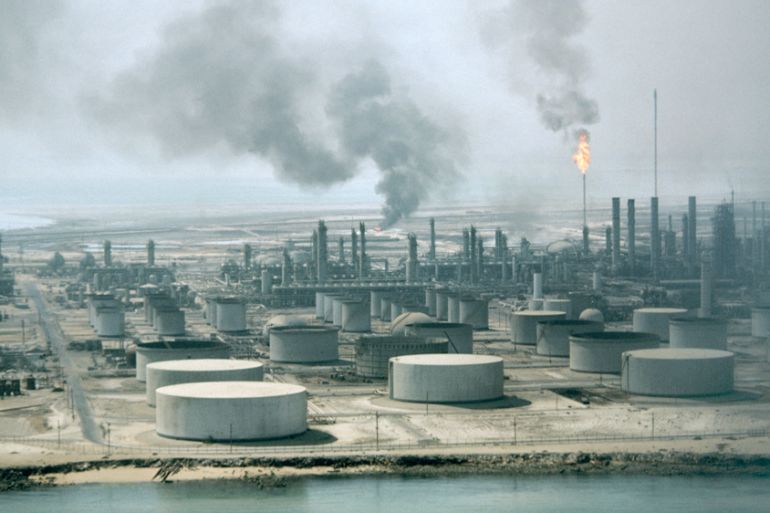Saudi Arabia to pump more oil to meet domestic demand
Output may rise to about 10.5 million barrels per day from average 10.15 but sources say Kingdom will not flood market.

Saudi Arabia’s oil output will edge up close to record highs in the coming weeks to meet summer demand for power but is unlikely to be pushed to the limit and flood global markets, Saudi-based industry sources said.
Production may rise to around 10.5 million barrels per day (bpd) during the summer, sources told the Reuters news agency.
Keep reading
list of 4 itemsWhat’s slowing down America’s clean energy transition? It’s not the cost
Global coal use to reach record high in 2023, energy agency says
COP28 Dubai is over: Four key highlights from the UN climate summit
Supply in April held steady to slightly lower at about 10.15 million bpd, three industry sources who monitor Saudi output told Reuters.
The predictions may help to ease market fears that Saudi Arabia could steeply add to a global glut after production-freeze talks in Qatar this month collapsed following Riyadh’s refusal to sign the deal without participation by Iran.
READ MORE: Oil prices dive as Doha talks on output freeze fail
Days before the meeting, Saudi Arabia’s top oil official, Deputy Crown Prince Mohammed bin Salman, said the kingdom could boost output immediately to 11.5 million bpd and go to 12.5 million in six to nine months.
Some analysts said the comments signalled a new phase in a battle for market share with Iran, which is ramping up its own exports after the lifting of Western sanctions.
|
|
But Saudi-based industry sources told Reuters that Riyadh does not plan to dump more oil into the market if there is no demand.
They said the comments by Prince Mohammed were made to highlight the theoretical ability of the kingdom to raise output rather than its immediate plans.
“Eleven million bpd? No, I don’t see it,” one source said.
The sources said production would likely stay at 10.2-10.3 million bpd and could rise by some 200,000-300,000 bpd in the hot summer months to around 10.5 million.
Iran’s oil is for sale: Who benefits, who loses?
Production often rises briefly in summer, when the kingdom burns more than 800,000 bpd to generate power as demand for air-conditioning surges.
State oil giant Saudi Aramco has a stated production capacity of 12 million bpd and maintains 1.5-2.0 million bpd as a cushion in case of any global supply disruption.
But production has never reached 11 million bpd. The kingdom pumped 10.56 million bpd, a record, in June last year. It kept output in March steady at 10.22 million bpd and has yet to disclose figures for April.
Saudi Arabia’s economy has suffered over the past 12 months in line with the falling price of oil, with a $98bn budget deficit last year. Its reserves decreased from $746bn in 2014 to $616bn today.
Last week, the world’s largest oil producer unveiled an economic reform plan to diversify its economy over the next 14 years.
The kingdom will also sell shares in state oil giant Aramco and set up a wealth fund in line with the new plan.
“We plan to set up a $2 trillion sovereign wealth fund … part of its assets will come from the sale of a small part of Aramco,” Mohamed bin Salman told the Saudi-owned Al Arabiya news channel.